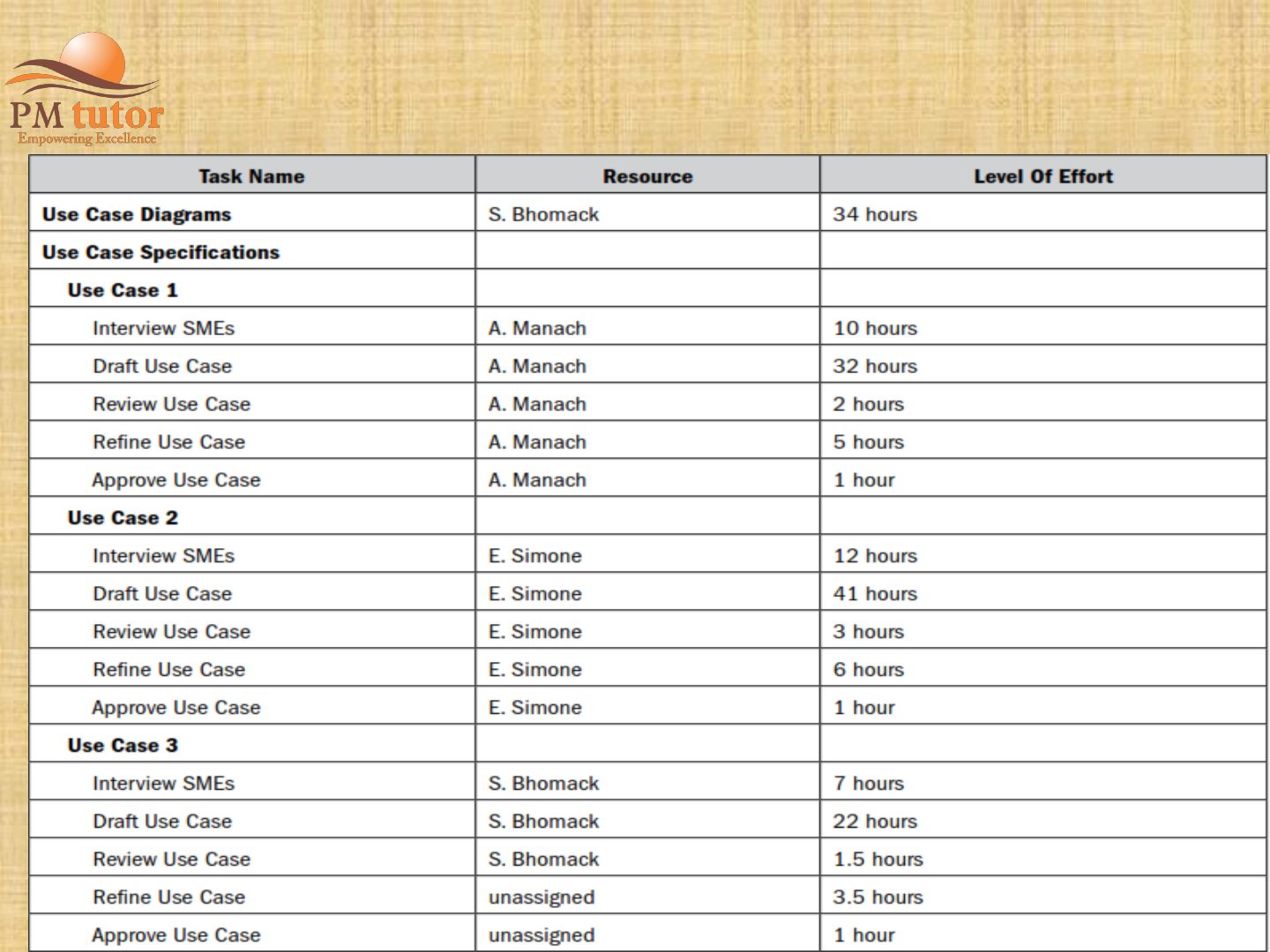
Business Analysis for Practitioners
- Business Analysis Planning

COURSE STRUCTURE
Introduction to
Business
Analysis
Module 1
Needs
Assessment
Module 2
Business
Analysis
Planning
Module 3
Requirements
Elicitation and
Analysis
Module 4
Traceability and
Monitoring
Module 5
Solution
Evaluation
Module 6

COURSE OBJECTIVE
At the end of this course, you will
understand what business analysis is all
about, why it is essential to the success of
any project and how to perform it on your
projects...

Business Analysis for
Practitioners
MODULE 3

MODULE OBJECTIVE

BUSINESS ANALYSIS PLANNING
Predictive (traditional) life cycle project requires
complete plans before elicitation
Adaptive (agile) life cycle projects requires some
planning upfront while the rest evolves over the course
of the project/program.
Business planning helps to ease
understanding of the scope of work,
stakeholders expectations and the
appropriate amount of business analysis
required for the project.

RATIONALE FOR BA PLANNING
Because requirements are the foundation from which
the project is based and a key contributor to project
success, the sponsor and project manager should
ensure that a sufficient level of business analysis
planning is conducted.
Business analysis planning achieves the following:
• Sets expectations with the sponsor, project team, and key stakeholders as to the
business analysis activities that will be performed;
• Ensures that roles are identified, understood, and communicated to everyone
participating in the business analysis process;
• Achieves buy-in and support for the business analysis process before work begins;
• Provides context to support estimation of the business analysis activities; and
• Produces a more efficiently run business analysis process, because activities are not
missed or excessively performed.

BUSINESS ANALYSIS PLANNING
Business planning and scheduling is a part of the
overall project management plan
The Business analyst should work closely with
the project manager while this plan is being
formulated so it can be integrated into the
project management plan being managed by the
project manager

BUSINESS ANALYSIS PLANNING
Creating the Business Analysis Plan involves:
Conduct or Refine the Stakeholder Analysis
- Techniques for Identifying Stakeholders (Brainstorming and
Organizational charts)
- Determine Stakeholder Characteristics (Attitude, Complexity,
Culture, Experience, Level of Influence and Location &
Availability)
- Techniques for grouping or Analyzing (Job Analysis, Personal
Analysis)
- Assemble the Stakeholder Analysis Results

Understanding Complexity
Source: PMI’s Pulse of the Profession In-Depth Report: Navigating Complexity

BUSINESS ANALYSIS PLANNING
Creating the Business Analysis Plan involves:
Create the Business Analysis Plan
- Business Analysis Plan vs. Requirements Management Plan
- What to include in the Business Analysis Plan (Determining
the Proper Level of Detail)
- Understand the Project Context
- Understand How the Project Life Cycle Influences Planning
Decisions (Predictive, Iterative and Adaptive)
-Ensure the Team is Trained on the Project Life Cycle

What to include in the Business Analysis Plan
Generally, decisions that are reflected in the business analysis plan and are
influenced by the selected project life cycle include:
• Type of elicitation activities to be conducted;
• Requirements analysis models that are required or expected;
• How requirements will be documented and communicated to stakeholders,
including the use of any specialized tools;
• Business analysis deliverables to be produced;
• Roles and responsibilities for those participating in the requirement
activities;
• How requirements will be prioritized, approved, and maintained;
• List of requirement states that will be tracked and managed in the project;
• How requirements will be validated and verified; and
• How the acceptance criteria will be determined for the requirements and
solution validation.

Understand How the Project Life Cycle Influences
Planning Decisions
Project life cycle models range from predictive (fully plan-driven) to
adaptive (change-driven), and hybrid approaches fall anywhere
between the two. It impacts a number of decisions about the
business analysis process, such as:
• Business analysis activities that are to be performed,
• Order in which the activities will be completed,
• Timing of activities,
• Deliverables,
• Level of formality required for deliverables,
• Approach for prioritizing requirements, and
• Methods for addressing requirement changes.

Predictive PLC Characteristics
○ Emphasis is on minimizing uncertainty.
○ Scope is entirely defined up-front.
○ Time and cost estimates are determined for the entire project when
scope is defined.
○ Business analysis is conducted mostly up-front; requirements are
completed before product development begins.
○ Deliverables are determined at the onset of the project.
○ Changes to scope are carefully managed.
○ Business value is delivered through one implementation.
○ The need and solution are known and do not change throughout the
project.
○ Predictive life cycle methods are also referred to as plan-driven,
traditional, or waterfall methods.

Iterative/Incremental PLC Characteristics
○ Project is split into phases and project phases are intentionally
repeated.
○ Project work is performed sequentially or with some overlap in
iterations.
○ High-level scope is defined up-front and the detailed scope is
elaborated upon for each iteration.
○ Scope for future phases is defined when the prior phase starts or
completes.
○ Product is developed iteratively as features are added incrementally.
○ Business analysis is performed up-front and then in small amounts
throughout the project.
○ Requirements analysis is performed in time-boxed iterations.
○ The need and solution become more stable as the project progresses.

Adaptive PLC Characteristics
○ Business value is emphasized over minimizing uncertainty.
○ Time and cost estimates are fixed for each iteration.
○ Iterations are conducted quickly.
○ Overall scope is agreed to early. Detailed scope and product
requirements are defined for a single iteration at a time.
○ Changes are expected; when new requirements are presented, these
are captured in a product backlog, and then the backlog is reprioritized.
○ Business value is delivered iteratively.
○ Business analysis is constant.
○ The need and solution are unknown and unstable.
○ Adaptive life cycle methods are also referred to as change-driven or
agile methods.

BUSINESS ANALYSIS PLANNING
Creating the Business Analysis Plan involves:
Create the Business Analysis Plan
- Leverage Past Experiences When Planning (Lessons Learned
and Retrospectives)
- Plan for Elicitation (Strategies for Sequencing Elicitation
Activities)
- Plan for Analysis
- Define the Requirements Prioritization Process
- Define the Traceability Approach

Strategies for Sequencing Elicitation Activities
There are a number of strategies the business analyst may consider when
determining which areas of requirements elicitation to address first. Suggested areas
of focus are where there are:
• Significant amounts of business value to be gained,
• Greater risks,
• Many project unknowns or uncertainties,
• Significant technical challenges,
• Dependencies on other components or interfaces,
• Required third-party resources that the project is dependent on, and
• Limited number of resources or a risk that a key resource may leave the project or
company.
Other constraints that affect elicitation sequencing are the dates key stakeholders
impose on the project. For example, plant shutdowns or seasonal constraints where
stakeholders are committed to the operational work of the business before the work
of the project.

Define the Requirements Prioritization Process
Setting expectations early with stakeholders helps to minimize situations where
stakeholders become unhappy when their requirements are prioritized to the bottom
of the list.
The project life cycle influences the prioritization process and often dictates the
frequency, timing, and techniques for performing prioritization
Requirements are prioritized based on a number of factors such as:
• Value. Addressing high-value requirements first to reap the financial or goodwill
benefits up-front.
• Cost. Evaluating requirements based on financial costs or opportunity costs.
• Difficulty. Considering how difficult the requirement is to fulfill.
• Regulatory. Addressing regulatory or legislative requirements that have imminent
compliance deadlines first.
• Risk. Implementing high-risk requirements first to uncover issues early.
Some common techniques for determining priority are MoSCoW, multivoting, timeboxing, and
weighted ranking.

Define the Traceability Approach
Requirements that are documented but fail to trace to a business need are considered out of
scope. Requirements that fail to trace to a solution component identify areas where the product
is not in compliance with the requirements.
When sufficient traceability is established, it is much easier for the project team to understand
how a proposed change will impact the project. A sufficient amount of traceability ensures that
the impacts of requirements change are properly assessed and quantified from a risk, cost, and
time perspective.
Higher-risk or more complex projects may require more traceability.
The types of traceability decisions the business analyst should consider are:
• Types of requirements to be traced,
• Level of detail to trace to,
• Relationships that will be established and maintained,
• Requirement attributes to be tracked,
• Requirement states that drive the requirements life cycle (example, approve, defer, reject, etc
• Tools used to perform the traceability, and
• Process decisions regarding how traceability will be established and maintained.

BUSINESS ANALYSIS PLANNING
Creating the Business Analysis Plan involves:
Create the Business Analysis Plan
- Define the Communication Approach
- Define the Decision-Making Process
- Define the Requirements Verification and Validation
Processes
- Define the Requirements Change Process
- Define the Solution Evaluation Process

Define the Decision-Making Process
The following information can be considered when defining the
decision-making process:
• Types of decisions that will be made, including how requirements will
be approved,
• Roles and authority levels, for example, who is involved in the
discussions and who makes decisions, etc.,
• Process to follow when consensus cannot be reached and
requirements-related issues need to be escalated,
• Required turn-around time for a decision to be reached,
• How decisions are documented and communicated, including
requirements signoff, and
• Special tools or techniques that may be used to help teams evaluate
alternatives, for example, decision analysis, decision modeling, decision
trees etc..

Define the Requirements Verification and Validation Processes
According to the PMBOK Guide – Fifth Edition,
• Verification is the evaluation of whether or not a product, service, or
system complies with a regulation, requirement, specification, or
imposed condition.
• Validation is the assurance that a product, service, or system meets
the needs of the customer and other identified stakeholders.
Requirements verification is the process of reviewing requirements and
models to ensure they meet quality standards. Verification processes
often leverage checklists to define the quality attributes.
Requirements validation is the process of ensuring that all requirements
accurately reflect the intent of the stakeholder and that each
requirement aligns to one or more business requirements. Validation is
performed through the use of structured walkthroughs and traceability.

BUSINESS ANALYSIS PLANNING
Creating the Business Analysis Plan involves:
Plan the Business Analysis Work
- Determine Who Plans the Business Analysis Effort
- Build the Business Analysis Work Plan (Identify the
Deliverables, Determine the Tasks and Activities, Determine the
Timing and Sequencing of Tasks, Determine the Roles and
Responsibilities, Identifying the Resources and Estimate the
Work)

BUSINESS ANALYSIS PLANNING
Creating the Business Analysis Plan involves:
Assemble the Business Analysis Work Plan
Document the rationale for the Business
Analysis work plan
Review the Business Analysis Plan with Key
Stakeholders
Obtain approval of the business analysis plan

Sample Business Analysis Work Plan

BUSINESS ANALYSIS PLANNING

Exercise
Remember the image in the previous slide, an
adequate business analysis plan properly executed
would have helped avoid the challenge they now
face.
How will you now plan for this project in
retrospect?
BUSINESS ANALYSIS PLANNING

